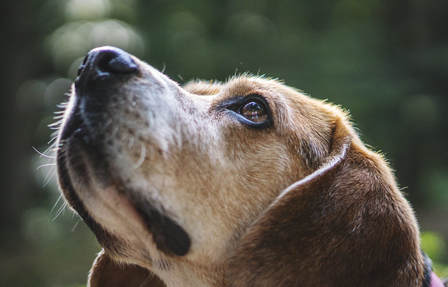|
As we wind down 2017, No Kill Huntsville takes a look back at the year as a whole to hit on some of the highlights which have taken place like we did last year. The Bad News • The city has yet to make a public declaration of intent that it will no longer destroy healthy and treatable animals. We were told by City Administrator John Hamilton during a September 2017 meeting that the city has not destroyed any healthy and treatable animals purely for space in three years. Based on this milestone, we see no reason for the city to delay in making a commitment to the No Kill model moving forward. Although the city faced some challenges in 2017 and did not quite match the level of success achieved in 2016, it is in an ideal position to make a public commitment and say that Huntsville is a No Kill Community in both culture and in spirit moving forward. We believe that the city can in good faith commit to a standard and live up to that standard. • We believe that otherwise healthy and treatable dogs are destroyed in the shelter having been labeled as a aggressive or a public safety risk when there may be ways to avoid destroying them. We realize that many dogs do not do well in a shelter environment. We also realize that some dogs are broken and really do present a public safety risk. The National Canine Research Council has stated that, "shelter evaluations may tell us as much or more about the effect of the shelter as they do about the individual dogs. Shelters are noisy, alien environments, filled with strange smells, unfamiliar people, and dogs they may hear, but not see. We should not be surprised that some dogs may. . behave differently when confined in a shelter, with its barrage of stressors that the dog cannot control, than they will in the safe, secure, predictable environment of a home, cared for by people with whom they are able to form positive attachments." We took our concerns about this issue to the city and we offered to pay for a subject matter expert to help the city for free. Our offer was declined. The city has instead decided to retain an expert of its choosing to help train the shelter staff. This training will take place in April. We are hopeful the training will result in fewer dogs being destroyed each month for behavior issues (which are categorized as fearful, aggressive, public safety and high arousal). We will be promoting a fundraiser to help offset costs of the training. • The shelter still has yet to fully embrace the No Kill Equation and develop programs which will serve to both reduce intake and increase output. Many of these programs cost nothing and some actions take very little time. We have included the list of things we have recommended to the city in the Looking Forward section of this blog below. We genuinely hope they will be considered in 2018 or that the shelter leadership will network with national organizations with which they are aligned to seek assistance to fine tune programs. Only when all of the programs of the No Kill Equation are fully embraced with the shelter be able to save more animals. The Good News • The city continues to do an impressive job saving the lives of animals as compared to those saved during the years before we took this issue to the public. We fully realize that saving the lives of animals is incredibly difficult and challenging work and that it is an ongoing struggle. The statistics for 2017 were not quite as good as for 2016. The highlights from our analysis are as follows:
• Plans to improve the shelter building are progressing. The first phase of shelter renovations happened last year with the opening of Cat World. We were told by Mr. Hamilton that renovations will be made to the dog housing area this year which will help reduce the number of dogs getting sick after they enter the shelter and which should also reduce some issues with negative behavior. The kennels in which dogs are housed are currently separated by low walls and fencing. We are told that the renovations will fully enclose each dog kennel. This will allow for dedicated air exchange for each kennel (to avoid the spread of disease and bacteria). This will also reduce the level of stimulation dogs experience from seeing and hearing other dogs to the extent they do now. • Huntsville Animal Services is now active on Petfinder. For a period of time there was no way that someone looking for a pet from the shelter could go to one location to see what pets are available. Some were on a Pet Harbor website and some were on Facebook. We asked the city to consider posting all of the animals on a single website and recommended Petfinder because it is considered the gold standard when people are looking to adopt a pet and want to view pets online. We are hopeful that in the months to come, all of the shelter pets will be shown on Petfinder whether they are in the shelter building or are in foster care. • More pets in our community are microchipped. We held a Chipathon over the summer to promote microchipping and hundreds of pets were microchipped. We are promoting another Chipathon for the month of January of 2018. The goal of these events is to get more pets microchipped so they can be returned home quickly and spend either no time in the shelter or less time in the shelter. • The shelter now has a sound system just for the animals. A Facebook group called Lost and Founds Pets of Huntsville/Madison County, led by Jeananne Jackson, promoted a You Caring Fundraiser to get a sound system installed in the shelter to help calm the shelter animals. The system was installed in July at no cost to the city. It plays soft rock during the day and classical music at night. Studies have shown that shelter animals show signs of reduced anxiety and anxiety-related behaviors such as barking, scratching, pacing and whining when exposed to music. Looking Forward No Kill Huntsville has been in a monitoring mode of sorts during this year and we plan to continue in that capacity in 2018. We look forward to the facilities upgrades which are being planned and we look forward to the training which will take place in April to help the shelter do a better job of evaluating dogs toward keeping more of those dogs alive. We have made a number of recommendations to the city regarding community outreach and program development. Although we have been told that our suggestions are considered after those of employees and volunteers, we hope the shelter leadership will consider implementing those programs which do not cost more, which take very little time and which would not require additional staffing. Some of our recommendations are listed here. If you support any of our recommendations, we ask that you communicate that support to Mr. John Hamilton and to Dr. Karen Sheppard. • Hold monthly community outreach meetings in the city council districts and county commission districts (one meeting a month in a different location) to address issues in those geographic areas to help reduce shelter intake while increasing adoptions through direct contact with the public being served. Many people don’t think about the shelter operation or how it is affected by their personal behavior. Community outreach can be used to educate the public to make better choices while making it clear what services the shelter does and does not provide. • Consider enacting a Companion Animal Protection Act like that enacted recently in Muncie, Indiana and which has also been acted in places like Austin, Texas, St. Paul Minnesota and the State of Delaware. A CAPA would be an ordinance to codify some of the standards for the shelter, regardless of who oversees the shelter. Enacting a CAPA would serve to preserve the legacy of Mayor Battle and other city leaders moving forward by ensuring the shelter does not destroy animals when there is open kennel space, by ensuring the shelter does not destroy animals without first networking with rescue groups and by ensuring the live release rate does not fall below 90% (among other provisions). • Improve the method by which adoption surrenders are handled so there is a mechanism for adopters to return animals within a set period of time rather than having them go to rescues for help or otherwise feel compelled to abandon them (which is illegal). • Improve surrender counseling to work harder to keep pets in existing homes and establishing a waiting list for owner surrenders (as opposed to just turning people away). • Hold periodic off site adoptions at city parks in various locations to interact with a wider segment of the public and make it easier for people to adopt a shelter pet. (An off-site event was held on December 29th at Big Spring Park and a small number of dogs were adopted.) • Stay open late one more night a week (in addition to Tuesday night) to make it easier for owners to find lost pets or adopt. • Implement Pets for Vets and Seniors for Seniors programs to reach certain segments of the population and to place larger dogs and older animals. • Implement a Pet Help Desk managed through a combination of email and phone using volunteers to help augment the staff in order to help people keep pets in their homes and out of the shelter. • Enact city anti-chaining and humane tethering ordinance similar to the one enacted in Arab last year to reduce problems associated with resident dogs who are not properly socialized to people or who may be subject to abuse and neglect (causing them to end up in the shelter). No Kill Equation Report Card
0 Comments
Your comment will be posted after it is approved.
Leave a Reply. |
No Kill Huntsville
Keep up with our updates and latest news regarding Huntsville becoming a no kill community. Archives
January 2022
Categories
All
image courtesy of Terrah Johnson
|




 RSS Feed
RSS Feed
